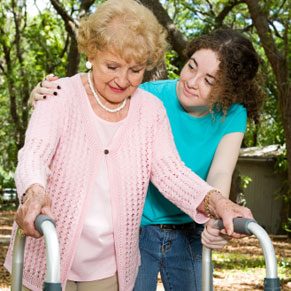
There are plenty of natural ways to help counter light depression and anxiety.

The Remedy: St. John’s Wort
Unlike some herbal fads, dozens of studies have established that St. John’s wort is better than a placebo – and almost as good as some prescription medications – at relieving symptoms of mild to moderate depression if taken several weeks.
The Proof: A review of 23 clinical trials found that St. John’s Wort lifted mild-to-moderate depression more effectively than placebos. But the studies were short – no more than eight weeks – so long-term research is needed.
How to Use It: For mild depression, search out products with 0.3 percent hypericin or 3-5 percent hyperforin. Take one 300 mg capsule, three times a day with food. Do not combine with prescription antidepressants. Consult a pharmacist before using with other drugs of any kind.

The Remedy: SAM-e
Pronounced “sammy,” it’s S-adenosylmethionine, a naturally occurring molecule found in almost every cell of the body.
The Proof: Several small-scale studies indicate that oral SAM-e supplements may ease depression, most likely by raising levels of serotonin and dopamine, two neurotransmitters that help regulate mood.
How to Use It: For mild depression, take 400 mg each day for two weeks on an empty stomach. If you’re still blue, raise the dosage to 600 mg a day. If you aren’t better within two weeks, see a doctor. Do not take with prescription antidepressants or if you have been diagnosed with bipolar depression.

The Remedy: Kava
The ground roots of the kava-kava tree seem to relieve some symptoms of clinical anxiety and some of the stress of ordinary living.
The Proof: European investigations involving several hundred people with clinical anxiety found that those who took kava felt much better than those who took a placebo.
How to Use It: The studies used 300-400 mg daily doses of kava extracts, standardized to 70 percent kavalactones, kava’s main active ingredients. Don’t drink alcoholic beverages with it; consult a doctor or pharmacist before using with any medications.

The Remedy: Light
For many people, the shorter amount of daylight in fall and winter triggers a type of blues or depression known as seasonal affective disorder or SAD.
The Proof: Studies have found that decreased daylight leads to a drop in the secretion of serotonin and an increase in melatonin levels, causing seasonal depressive symptoms to surface in some individuals.
How to Use It: Spend more time outdoors, sit in front of a south-facing window several times a day, or invest in a light box: Exposure to 5,000-10,000 lux (a measure of the light’s intensity) for 20-30 minutes per day at a distance of 1-3 feet from the box will keep most people upbeat through even the darkest days of winter.

The Remedy: Exercise
Numerous studies have shown that exercise of all kinds can be inexpensive, effective therapy for anxiety, mild-to-moderate depression, and low self-esteem.
The Proof: Although the mechanism of the benefit is not clear, some experts theorize that aerobic exercise may encourage the release of endorphins, the brain’s so-called “feel-good” chemicals. One study found that depressed patients who jogged or walked briskly for 30 minutes three times a week improved their moods as much as those who took antidepressant medications.
How to Use It: Try to get on the move for 20-60 minutes, three times a week – outdoors, when you can, to take advantage of sunlight.

The Remedy: Volunteer Work
Helping others reduces isolation and gives a person a sense of accomplishment and purpose, feelings that many depressed people lack.
The Proof: Researchers who analyzed 37 studies on volunteering found that older people who offered their time to others were happier overall, had a better sense of well-being, and were less likely to feel sad and anxious.
How to Use It: You don’t need to join an organized volunteer group to experience a mood lift. A University of Michigan study showed that informally offering help to a friend, family member, or neighbour who needs it is just as effective.